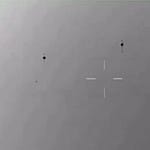TL;DR
Across the globe — from the Scythians and Göbekli Tepe to the Mapuche, Tiwanaku, Moai of Easter Island, and Peru — statues show the same hand-over-abdomen posture. This unlikely parallel suggests not coincidence but either (1) diffusion from a forgotten mother culture with a unified worldview, or (2) a shared symbolic archetype rooted in human consciousness itself. The posture encodes ideas of life-force, cosmic balance, and our role as mediators between Earth and Sky.
The Shared Gesture: Hands on the Abdomen
What we see across these cultures is remarkable consistency. Whether carved in wood or stone, thousands of miles and millennia apart, these statues share the same hand position — clasped or resting at the navel or solar plexus. Anthropologically, this region of the body is associated with:
The womb / fertility → creative life-force, continuity of generations.
The solar plexus → energy center of will, balance, and identity (echoed later in chakra traditions).
The “navel of the world” → many cultures placed their sacred centers (omphalos stones, axis mundi) at the Earth’s “bellybutton,” reflecting this same symbolism.
This body gesture is not decorative. It is deliberate encoding of cosmology.
Archetypal Symbolism
Carl Jung and comparative mythologists would call this an archetype: a recurring symbolic pattern embedded in human consciousness. But when its appearance spans Scythia, Anatolia, Polynesia, and the Andes, it suggests something deeper than isolated invention.
Göbekli Tepe (Turkey, 9600 BCE) → statues with folded hands, earliest known monumental art.
Tiwanaku (Bolivia, 500–1000 CE) → high-altitude megaliths with figures holding their midsection, carved with cosmic symbols.
Moai (Easter Island, 1200–1600 CE) → colossal heads with similar posture, representing ancestral watchers.
Mapuche (Chile) → chemamüll statues with the same hand position, used for funerary rites.
Peru & Scythia → guardians, warriors, or ancestors carved with clasped hands, anchoring identity and lineage.
The consistency points to a shared code — an embodied “universal language of posture.”
Possible Explanations
Cultural Diffusion from a Lost Civilization
The “mother culture” hypothesis suggests a prehistoric global seafaring society — perhaps the same hinted at in myths of Atlantis, Mu, or pre-Younger Dryas civilizations. Survivors spread symbolic practices that encoded cosmology in stone.Convergent Symbolism
Independent cultures may have discovered the same symbolic truth: the abdomen as the center of vitality and the bridge between physical survival and spiritual transcendence. The posture is a natural choice to embody stability, reverence, and connection.Frequency-Consciousness Model
From a Frequency Wave Theory (FWT) lens, the abdomen corresponds to the body’s resonance core, where breath, vibration, and internal frequencies converge. By encoding statues with this gesture, ancient builders may have been preserving a symbolic “key” to human alignment with the cosmic field.Hands at the abdomen = hands at the center of Frequency Momentum (FM = ½ ρ ω A²) inside the human system. It marks where life energy stabilizes and interacts with external fields.
A Shared Worldview: Earth as the Center of the Cosmos
The hand-over-abdomen posture mirrors an older worldview:
Earth as a womb → humanity gestating within it.
The individual as a microcosm → belly as “center,” mirroring Earth’s central role in the cosmos.
Ritual remembrance → statues freeze the body in a posture of cosmic alignment, teaching future generations the same worldview.
This supports the idea that ancient peoples shared a global consciousness — perceiving themselves not as isolated tribes, but as participants in a unified cosmic order.
Conclusion
The statues are not simply art. They are frequency markers of memory, encoding a universal human truth about where life-force resides and how humans relate to the cosmos. Whether through diffusion from a mother culture or convergent symbolic insight, these statues whisper the same message:
Humanity once carried a shared cosmological code, a perception of reality radically different from the fragmented worldview of today.











